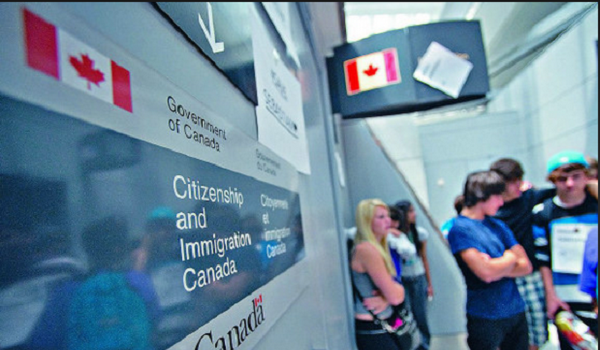Majority of those sent deportation letters still living in Canada, CSBA figures show
Most people living in Canada who have been sent deportation letters in the past eight years are still in the country, according to official figures disclosed by the Canada Border Services Agency.
The figures show that 14,609 people were sent letters informing them they are facing deportation between 2016 and May last year.
But 9,317 of those were still living in Canada last year, including 2,188 people sent deportation letters in 2016 and 2017.
Conservative immigration critic Tom Kmiec, who received the figures in an answer to a parliamentary question he asked last May, said they suggest a lack of enforcement. He said they are a symptom of a “broken immigration system” and are contributing to an erosion in public confidence.
The figures show that 3,087 people – fewer than a quarter of people sent deportation letters since 2016 – have been removed from Canada.
“A person found to be illegally in Canada and being placed on the deportation list should be prioritized for removal,” Mr. Kmiec said. “Lack of enforcement like this contributes to the growing uncertainty and drop in support on the historic immigration consensus across all parties.”
CBSA said in the response to Parliament that “everyone ordered removed from Canada is entitled to due process before the law, and all removal orders are subject to various levels of appeal, including judicial review. Once all legal avenues have been exhausted, foreign nationals are processed for removal.”
Some people sent deportation letters had their removal order voided or received permanent resident status.
The CBSA reply also showed that 771 people with deportation letters had left the country voluntarily since 2021.
Immigration lawyer Richard Kurland said without formal exit controls “we have no way of knowing if people have ‘self-removed’ and left Canada.”
“The exit is under the radar, and so the number of active deportation files is always a guesstimate,” he said.
Rebecca Purdy, a spokeswoman for the CBSA, said in a statement that the agency has a legal obligation to remove all foreign nationals who are subject to an enforceable removal order. In 2023, it enforced the removal of 14,962 people, she said.
“The timely removal of inadmissible foreign nationals plays a critical role in supporting the integrity of Canada’s immigration system,” she said. “The Agency places highest priority on removal cases involving national security, organized crime, crimes against humanity and criminals.”
She said the existence of a removal order does not mean that the agency is in a position to immediately remove someone from the country.
“While some people subject to a removal order will be removed almost immediately, others will pursue legal recourse mechanisms available to them, which can take years to adjudicate,” she added.
“Processing a removal order is complex and each case is unique. It involves legal and administrative procedures, coordination of various government agencies, and respect of international agreements and human rights considerations.”
There are an estimated 300,000 to 600,000 people living in Canada without valid documents. Many have been working here for decades but risk deportation because they lack formal status.
Immigration Minister Marc Miller is planning to create a path to citizenship for people who have lived and worked in Canada illegally for years, many of whom have children.
He is preparing to present to cabinet this spring a plan for a broad and comprehensive program to allow people without valid documents to remain in Canada. They include people who entered the country legally as temporary foreign workers or international students and stayed after their visas expired, as well as asylum seekers whose claims were rejected.
At the House of Commons immigration committee last week Mr. Miller signalled that the program would be comprehensive but not perhaps as broad as groups who have been advocating to “regularize” people without documentation have been calling for.
Syed Hussan of the Migrant Rights Network called for a moratorium on deportations as the government is working on a program to allow those without valid papers to stay.
“The people being deported today could be regularized tomorrow,” he said.
He said that receiving a deportation letter “is not an end of the process” but deportations increased last year.
An average of 39 people were deported every day in the first half of 2023, compared with an average of 21 people a day in 2021, he said.
This article was reported by The Globe and Mail
















